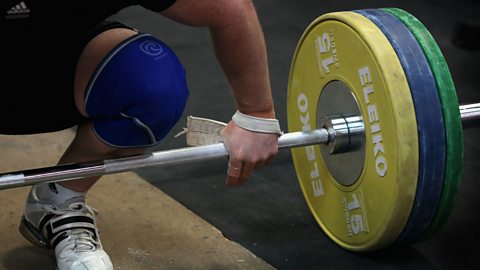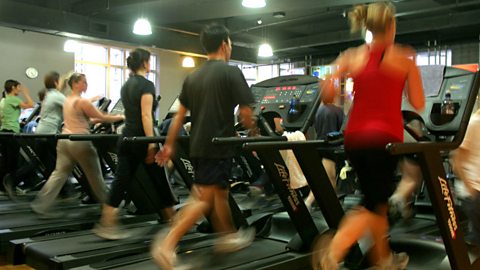Long term effects of exercise on the body systems
Taking part in regular exercise or training around three times per week for six weeks will lead to adaptation of the body systems that are used or trained. This has the effect of increasing performance in that type of exercise or sport and is often beneficial to general health and everyday life.


| Long term effects of exercise | Type of training | |
| Cardiovascular system | Cardiac hypertrophy; increased stroke volume (SV) at rest and during exercise; decrease in resting heart rate (HR); increase in cardiac output (Q); capillarisation at the lungs and muscles; increase in number of red blood cells | Aerobic |
| Respiratory system | Increased vital capacity; increase in minute ventilation (VE); increase in tidal volume (TV); decrease in breathing rate (BR); increased number of functioning alveoli; increased strength of the respiratory muscles (internal and external intercostals and diaphragm) | Aerobic |
| Energy system | Increased production of energy from the aerobic energy system; increased tolerance to lactic acid | Aerobic; anaerobic |
| Muscular system | Muscle hypertrophy; increased strength of tendons; increased strength of ligaments | Resistance |
| Skeletal system | Increase in bone density | Resistance |
| Cardiovascular system | |
|---|---|
| Long term effects of exercise | Cardiac hypertrophy; increased stroke volume (SV) at rest and during exercise; decrease in resting heart rate (HR); increase in cardiac output (Q); capillarisation at the lungs and muscles; increase in number of red blood cells |
| Type of training | Aerobic |
| Respiratory system | |
|---|---|
| Long term effects of exercise | Increased vital capacity; increase in minute ventilation (VE); increase in tidal volume (TV); decrease in breathing rate (BR); increased number of functioning alveoli; increased strength of the respiratory muscles (internal and external intercostals and diaphragm) |
| Type of training | Aerobic |
| Energy system | |
|---|---|
| Long term effects of exercise | Increased production of energy from the aerobic energy system; increased tolerance to lactic acid |
| Type of training | Aerobic; anaerobic |
| Muscular system | |
|---|---|
| Long term effects of exercise | Muscle hypertrophy; increased strength of tendons; increased strength of ligaments |
| Type of training | Resistance |
| Skeletal system | |
|---|---|
| Long term effects of exercise | Increase in bone density |
| Type of training | Resistance |
Cardiac hypertrophy
Hypertrophy means an increase in size, so muscle hypertrophy means the muscles get bigger. If you weight train regularly doing biceps curls, your biceps will show muscle hypertrophy. Cardiac hypertrophy is where the ventricle wall gets larger or thickens as a result of exercise.
The muscle wall of the left ventricle increases in size, meaning it is able to pump out more blood during each contraction which increases the stroke volume. As stroke volume is increased, resting heart rate decreases but cardiac output (Q) remains the same as SV Ă— HR = Q.
Capillarisation
Capillarisation is the process where new capillaries are formed. Capillarisation takes place at the alveoli in the lungs and at the skeletal muscle. This has the effect of increasing the amount of oxygen that can be transferred to the working muscles as well as increasing the amount of carbon dioxide that can be removed.
Question
Give an example of a type of exercise that would produce cardiac hypertrophy.
Any endurance sport, such as long-distance running, long-distance swimming, or long-distance cycling.
Question
Give an example of a type of exercise that would produce muscle hypertrophy.
Any type of resistance exercise, such as weight training.